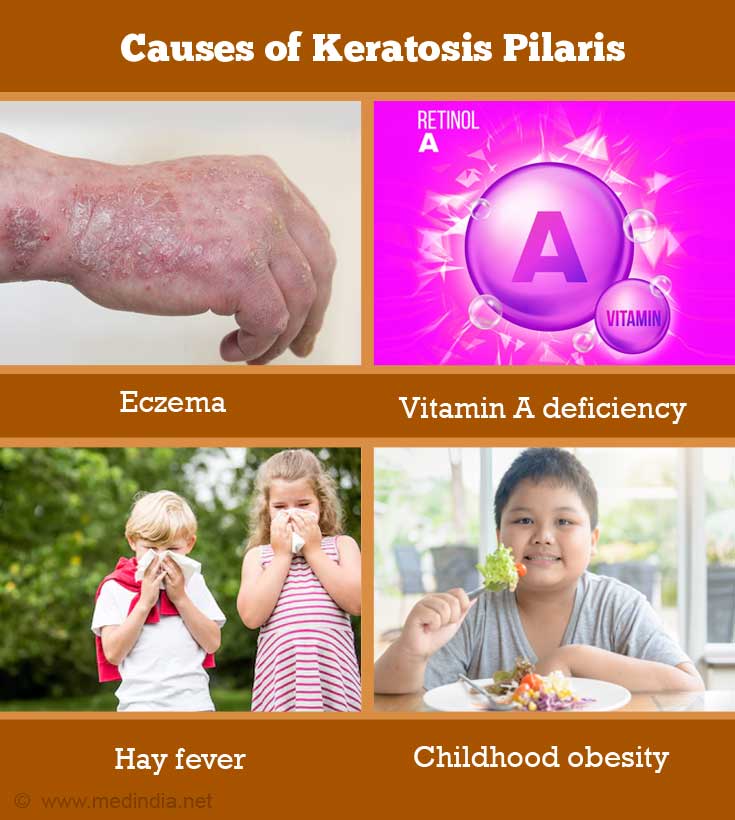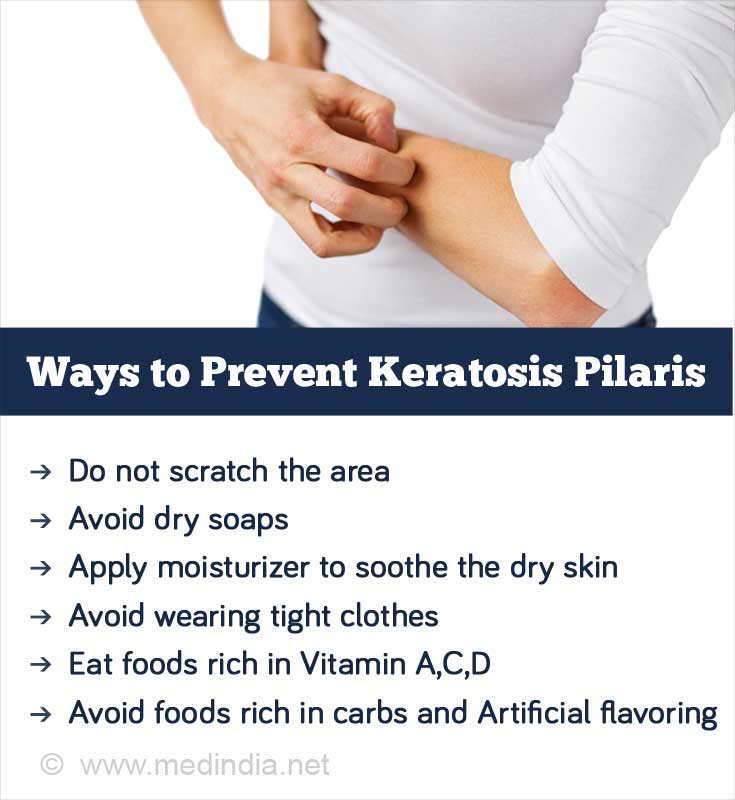- American Academy of Dermatology Association-KERATOSIS PILARIS: DIAGNOSIS AND TREATMENT - (https://www.aad.org/public/diseases/bumps-and-growths/keratosis-pilaris#treatment)
- Dermnet NZ- Keratosis Pilaris Author: Dr Amanda Oakley MBChB - (https://www.dermnetnz.org/topics/keratosis-pilaris/)
- American Academy of Dermatology. American Academy of Dermatology. – Keratosis Pilaris - (https://www.aad.org/public/diseases/bumps-and-growths/keratosis-pilaris)
- MAYO CLINIC-Patient Care and Health Information-Diseases and conditions - (https://www.mayoclinic.org/diseases-conditions/keratosis-pilaris/symptoms-causes/syc-20351149)
What is Keratosis Pilaris?
Keratosis pilaris (KP) is a common, harmless, non-infectious skin condition that causes dry rough patches and small, hard bumps usually on the upper arms, thighs, and buttocks. Children may have these bumps on their cheeks. The bumps are often light-colored and sometimes with itching, redness, or swelling. These bumps look like goose bumps or the skin of a plucked chicken. Hence it is also known as chicken skin.
These rough-feeling bumps are actually plugs or scales of dead skin cells. Keratosis pilaris occurs due to overproduction or build up of keratin, a protective protein found on the skin.
Keratosis pilaris is mostly seen in children and teens and usually disappears by 30 years of age. Some mistake the bumps for small pimples. Dry skin and low humidity can make these bumps more noticeable. It is seen that the bumps clear up during the summer only to return in the winter. This skin condition is found more frequently in women.
What is the Classification of Keratosis Pilaris?
Keratosis pilaris is classified into three types, based on manner of presentation and site of occurrence.
- Keratosis pilaris alba – refers to bumpy appearing skin that is not inflamed.
- Keratosis pilaris rubra – refers to presence of inflamed bumps on face, arms, and legs.
- Keratosis pilaris rubra faceii – mainly presents as a red-colored rash of the cheeks.
What are the Causes of Keratosis Pilaris?
- Though the exact cause is unknown, it often affects people with dry sensitive skin, those suffering from inflammatory conditions such as eczema (atopic dermatitis) or ichthyosis vulgaris (a skin condition that causes very dry skin).
- There is also a genetic factor involved as you have a higher tendency to develop keratosis pilaris if parents or a blood relative also has a similar condition.
- Some cases of keratosis pilaris are believed to be caused by environmental factors or deficiencies in the body. There’s a growing body of research which indicates that deficiency of vitamin A and essential fatty acids can cause keratosis pilaris.
- You are more likely to develop it if you suffering from asthma or hay fever.
- Children who are obese are also at greater risk in developing chicken skin disorder.
- Side effect of vemurafenib, a medication used in treatment of melanoma is a known causative factor.
- Sudden increase in symptoms or spontaneous resolution of the condition are known to occur with hormonal change such as pregnancy.

What are the Signs and Symptoms of Keratosis Pilaris?
- Painless tiny bumps which occur mostly on the upper arms, thighs, or buttocks. These bumps can appear anywhere on your skin, except on your palms and soles. Some bumps look like pimples or a rash.
- Dry rough bumpy skin which feels like sandpaper and resembles the skin of a plucked chicken.
- Presence of scaly spots which may appear skin colored, white (keratosis pilaris alba) or inflamed, and red (keratosis pilaris rubra). The skin in keratosis pilaris alba is not itchy or sore whereas in keratosis pilaris rubra the skin appears inflamed and sore.
- Worsening of condition when seasonal changes cause low humidity and skin tends to be drier as in winter or a dry climate.
How do you Diagnose Keratosis Pilaris?
Keratosis pilaris can be diagnosed clinically by examining your skin. However, a biopsy may be done to rule out other skin conditions resembling keratosis pilaris.
A microscopic appearance showing presence of plugged hair follicles, epidermal hyperkeratosis, hypergranulosis, and superficial perivascular lymphocytic inflammation is characteristic of keratosis pilaris.
How do you Treat Keratosis Pilaris?
There is no way to prevent keratosis pilaris but certain measures may improve the appearance of the affected skin.

- Be gentle to the skin. Do not scratch the goose bumps or rub the skin roughly. Avoid harsh, drying soaps. Gently remove dead skin with a washcloth or loofah. Use lukewarm water instead of hot for bathing and limit your bath time to ten minutes or less to prevent drying of the skin. After washing or bathing, gently pat the skin with a towel and apply a moisturizer when the skin is still damp.
- Moisturize the skin regularly. Apply a moisturizer that contains lanolin, petroleum jelly, or glycerin to soothe dry skin and help trap moisture. Creamy moisturizers can be reapplied to the affected skin several times a day to relieve the itch and dryness.
- Use topical exfoliants to remove dead skin cells from the surface of your skin. These include creams that contain alpha-hydroxy acid, salicylic acid, lactic acid, and urea.
- Use creams containing vitamin A to prevent plugged hair follicles and increase new skin cell turnover.
- Use a humidifier—low humidity dries out the skin. A home humidifier will add moisture to the air inside your home and prevent drying out of the skin.
- Avoid wearing tight clothes—protect affected skin from the friction caused by wearing tight clothes.
- Follow a healthy diet plan—include foods rich in Vitamin A (spinach, carrots, sweet potatoes, liver), Vitamin C (broccoli, tomato, papaya and sweet peppers, citrus fruits), Vitamin E (seeds, nuts), Vitamin D ( sun exposure, fish oils), and Vitamin B7 (sunflower seeds, cauliflower, mushrooms, and avocados) in your daily diet.
- Regular intake of Omega 3 fats (fish oils) is essential to manage oil production and maintain moisture of the skin.
- Avoid foods which make the condition worse—such as sugar, high-fructose corn syrup, trans fats, refined carbohydrates, artificial flavoring, and coloring.
- If the condition persists, your doctor may recommend microdermabrasion, light therapy, or laser treatment, as these have been found to offer some benefit in keratosis pilaris.







